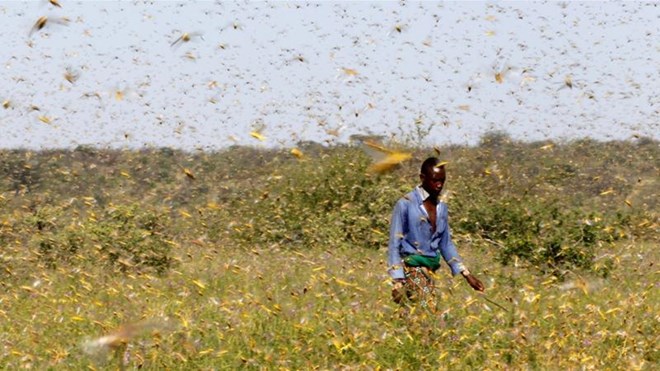
Saturday June 20, 2020
By LUKE HAWKER
EAST AFRICA is on the brink of a third wave of locust attacks threatening crucial food supplies from the winter harvest.

Desert locusts' destructive infestations cause significant crop damage and hunger [Njeri Mwangi/Reuters]
East Africa has already been devastated by a series of desert locust infestations in the past few months. Between January and April up to 1.3 million hectares of land and 200,000 hectares of crops were destroyed in Ethiopia.
It is feared the favourable dry season and drought conditions will provide the optimum breeding ground for the insects in time for the next harvest.
After multiplying into their millions, the locusts then emerge during the rainy monsoon season to wreak havoc.
The East Africa regional organisation found up to 350,000 tons of cereals had been destroyed by locusts between January and April.
In February, Somalia declared a “national emergency” after a deadly swarm decimated vital vegetation.
Kenneth Kemucie Mwangi from the climate monitoring programme of the Intergovernmental Authority on Development (IDAG) said: “Until we get extended figures, I would just say Ethiopia was definitely the most affected in terms of croplands, then Somalia.”
Cyril Ferrand, a Nairobi-based expert from the Food and Agriculture Organisation of the United Nations (FAO) highlighted the extent of the problem by insisting hundreds of billions of locusts have already been killed in the region.
He said: "About 400,000 hectares were controlled in the region between January and mid-May.
“We estimate that 400 billion locusts have been exterminated.”
It is feared the next wave could just be around the corner after Namibia's Ministry of Agriculture said on Wednesday the locusts were flying in from Botswana and Zambia.
Authorities attempted to control any potential outbreak by deploying pest control teams to the affected areas.
However videos shared by the ministry showed thick clouds of insects flying low over crop fields and farmland in the central Otjozondjupa region.